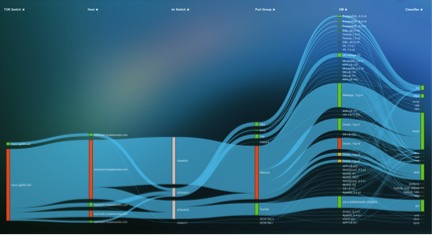Bridging the Gap between Virtual and Physical Infrastructure Management Silos
By: Chia-Chee Kuan
 Application performance is critical to business performance, and data center managers are tasked with optimizing application performance to the fullest. However, application servers are typically
provisioned with virtualized compute, storage and network resources, and the ever-increasing challenge to data center IT operations teams is the ability to grasp virtual infrastructure’s impact on
application performance. Virtualization management teams simply do not have the real-time visibility required to ensure that application performance is optimized and well supported by data center
virtual infrastructure and the underlying physical resources.
Application performance is critical to business performance, and data center managers are tasked with optimizing application performance to the fullest. However, application servers are typically
provisioned with virtualized compute, storage and network resources, and the ever-increasing challenge to data center IT operations teams is the ability to grasp virtual infrastructure’s impact on
application performance. Virtualization management teams simply do not have the real-time visibility required to ensure that application performance is optimized and well supported by data center
virtual infrastructure and the underlying physical resources.In this article, we’ll look at the challenges in managing and optimizing virtualized data center infrastructure, and the requirements for a unified application, virtualization, and infrastructure visibility solution.
Application Interdependencies
Virtual resources and allocations most directly impact application performance, long before physical resources impact that performance. A physically over provisioned data center can be a virtually under provisioned infrastructure, causing application performance bottlenecks unresolvable by adding unlimited amount of physical resources. For example, if an application is not allocated adequate vCPU (virtual CPU) or memory, its performance will be adversely impacted regardless of the amount of physical CPU resources available.Unfortunately, data center management occurs in silos (virtualization management, storage management, network management, server management, and application management), and it is difficult for any one discipline to see outside its silo. What’s needed is instrumentation that can see across these multiple silos.
The virtualization layer is the center of the data center and is best suited for instrumentation for all-inclusive operational visibility. Above the virtualization layer are the applications and guest OS, and below the virtualization layer is the physical layer (compute, storage, and network resources). The virtualization layer itself contains the virtual machines, virtual storage, and virtual networking resources.
Now, let’s look at the requirements for visibility in each of the management silos.
The Network Engineer’s View
The network engineer’s full stack visibility should include:• Physical network switch & port connectivity
• Physical host network interface
• Virtual Switch (vSwitch or Distributed vSwitch)
• Virtual Networks (VLAN or VXLAN or SDN)
• Virtual Machine network interface
• Virtualized Application service and topology
Such a network view might look like the one in Figure 1:

Figure 1: A network engineer’s full stack view.



















